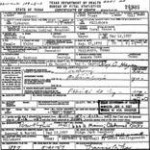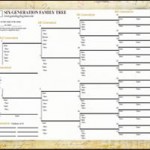Genealogy for Beginners
Genealogy Beginner’s French Canadian Genealogy Tips
November 26, 2011 by ramona
Filed under Articles, Genealogy for Beginners, General Tips, Getting Started in Genealogy, Introduction to Genealogy, Latest News, Lesson 7 Articles
 The genealogy of Upper Canada and/or French Canadian genealogy are amongst the most difficult spheres of ancestral research. This is true not only for the genealogy beginner but also for professional genealogists. Although this area may have some of the best preserved and indexed records in the world it is also one of the most confusing to investigate. This is true for several reasons, most of them being due to historic and multi-cultural influences such as language and the cultural influences of Acadian and Métis ancestry, all of which makes researching French Canadian roots so exceptional and unique.
The genealogy of Upper Canada and/or French Canadian genealogy are amongst the most difficult spheres of ancestral research. This is true not only for the genealogy beginner but also for professional genealogists. Although this area may have some of the best preserved and indexed records in the world it is also one of the most confusing to investigate. This is true for several reasons, most of them being due to historic and multi-cultural influences such as language and the cultural influences of Acadian and Métis ancestry, all of which makes researching French Canadian roots so exceptional and unique.
The basics of genealogy research in Quebec begins with vital records, however searching for these records requires search strategies more in tune with European genealogical research methods. Before the first of January 1994 there were no civil registrations of births, marriages and burials, these records were the sole dominion of the church.
Church Records
Churches in Quebec were required by law to keep two copies of their registers, one for the church and another that was kept for the district protonotary (chief clerk at the regional courthouse). The registers were turned in to the protonotary once per year and that, for several years, is as close as Quebec came to having a civil register. It was not until 1927 that municipalities gained the right to record births; however, the records seem to indicate that the people preferred the church. To complicate matters further, civil marriages, in fact, any marriage outside of the Catholic Church was not recognized before 1960. An interesting aside to this is that church marriage records are still considered a legal document in the province of Quebec. In 1994 the government of Quebec took over the responsibility for registering all vital events and at that time records of registrations over 100 years old were moved from the district protonotaries to a national archives.
Tips for French Canadian research
With this in mind it is easy to understand why searching for your French Canadian roots can be a confusing prospect. It does help to know what to look for, or perhaps what to look out for would be a better description. Here are some things to keep in mind while working your way through Quebec vital records.
Civil and church records may have discrepancies in information, although the dates are seldom in conflict. Also if you do not find what you are looking for in one set of records check the other set as sometimes the dual documentation policy was not always strictly followed. Although this is rare it does happen, consequently it is worth checking both sets of records.
About Protestant records
Following the British conquest of Quebec up to the late 1820’s the Anglican Church was the only Protestant religion that was legally entitled to keep civil registers, with the exception of a small number located on the Isle of Montreal. Despite this, some Protestant churches still performed marriages, baptisms and burials. For these records you will need to check with the church archives. In 1804 protestant marriages were legalized.
Before the war of 1812 protestant ministers from the states of Vermont, New York and New Hampshire would visit as missionary circuit riders conducting marriages, baptisms and burial services. It is probable that they took their registers with them when they left. This is a good clue on where to look if you have not been able to find records where you expected to find them. An interesting note in this area is that Catholic missionaries would also travel to Vermont and these records were brought back to Quebec.
Illegitimacy was considered a great disgrace within the protestant faith; this resulted in a failure to baptize illegitimate children. Although not conclusive, this is something to take into account if you have covered all other bases and still can not find a record for your generations past.
Catholic records
- French Canadian Catholic records are filled with little quirks, dates are written down in their full form such as One thousand seven hundred and thirty one for 1731.
- Women were listed with their maiden names; take that into consideration when searching indexes.
- Pay attention to the names of witnesses and godparents in the registers as it was common for them to be close family members.
- Notes in the margins of the record can give additional information.
- Illegitimate children within the Catholic Church were often noted as “inconnuu”, for example an illegitimate child may be written down as Francios Inconnu or Genevieve Inconnu. These children will often be found in the census with their family so use that resource to cross reference with an entry of “inconnu”.
Important Collections
Here is a tip that may save you a great deal of time with your French Canadian research. Check the Tanquay Collection; Dictionnaire Genealogique des Familles Canadiennes. (Genealogical Dictionary of Canadian Families from the Founding of the Colony to Our Time) The Tanquay Collection is the work of father Cyprien Tanquay a notable early Canadian genealogist who researched and recorded the origins and family lines of early Canadian colonists. The Collection may have a good deal of your family tree already researched. In it you will find individuals listed with an easy to follow Roman numeral system that lets you know immediately if there are deeper roots in your family tree. Using this collection in tandem with the Drouin Collection (The repository of Quebec Vital and Church records) and the Canadian Census Collection for Quebec will eliminate a great deal of frustration.
Language
One other slightly intimidating obstacle to French Canadian genealogy is that the records are written in French. Do not let this scare you away there is a simple formula that you can follow even if you do not speak a single word of French.
Dit names
Lastly, educate yourself about dit names. A dit name is the name that was used to differentiate one family of a common surname from another. Some of the older families may have several dit names. This is important information because when you are tracing back; the predecessor of the ancestor you are researching may be listed under a different last name. For example if you were researching Michel Simon you may find his father listed as Francois Leonard or Francois Simon dit Leonard or Francois Simon-Leonard as Leonard is a dit name for Simon. Dit names may (not always) be an indication of an ancestor further back in the record so pay attention to them.
The Subject of French Canadian genealogy covers a large area of which this post only scratches the surface. If you have any questions or for information on how to read a French Canadian Church Vital record entry check out the Ask a Genealogist Forum.
The Value of Genealogy Communities
November 4, 2011 by ramona
Filed under Genealogy for Beginners, Genealogy Research Resources, Making genealogy Connections; Reaching out
 Genealogy communities have sprung up all over the internet. They come in all shapes and sizes, from online search sites with databases, surname registries, one name study groups and professional societies, to groups like Genealogybeginner that focus on the needs of beginning genealogists. What they all have in common is a group of people who share a passion for researching their family tree. That is why genealogy communities and groups have become so popular.
Genealogy communities have sprung up all over the internet. They come in all shapes and sizes, from online search sites with databases, surname registries, one name study groups and professional societies, to groups like Genealogybeginner that focus on the needs of beginning genealogists. What they all have in common is a group of people who share a passion for researching their family tree. That is why genealogy communities and groups have become so popular.
Belonging to one or even several online genealogy communities can have great benefits to genealogists both beginner and advanced.
Deciding what group is right for you?
When looking at the benefits of joining a genealogy community it is a good idea to first determine your own needs and then define what you expect to get out of your membership. Some things for the beginning genealogist to consider before signing up are the size of the group, as well as its main function. Many genealogy groups focus on the needs of professional genealogists and although they offer resources that may help you with your family tree research, they sometimes do not provide the assistance needed to use those resources. In addition, many online genealogy communities are quite large and it is easy to become lost in the shuffle; with your important questions going unanswered.
What are the elements of a great genealogy community?
So what are the needs of a beginning genealogist? The biggest need is for education and instruction. Understanding not only what information you should be looking for but also how to find it, document it and apply it to your family tree. Next is the need for access to help, belonging to a community that is readily available to afford you, the beginning genealogist, with important resources such as great downloadable family tree templates, useful links and informative articles. In addition, providing answers to your key questions in a timely manner should be on your high on your list of priorities.
Now the question becomes, what genealogy communities may exist that meets your specific needs? What you want here is a community that can grant you access to an informative and relevant article database or Blog, offer quality instruction and classes, have a community meeting place or forums and finally someone (preferably a live experienced and friendly resident genealogist) who will be available to answer your questions. On top of this, you will want a group that keeps abreast of genealogy news and will inform you when new records become available, records that will help with your search interests. Finally, you want it to be fun, positive and encouraging.
Making the most of your genealogy community
The next part of this equation lies with you, once you have found your genealogy community it is up to you to make the most of it. What that means is involvement. Personal involvement equals participating in forums (not just lurking) and networking with the greater community. Participation broadens your scope; you could find hidden resources you would never have guessed at, such as meeting another member with similar interests and helpful information. Without participation, there is no community.
Wrap Up
Finding the right genealogy community can be a great motivational tool for beginning genealogists who soon learn that the pursuit of their family history can be an isolating experience. For those times when your friends and loved ones fail to understand your excitement over some dusty old record or question your sanity due to your preoccupation with visiting cemeteries, having a community of like minded ancestor hunters can be a great blessing.
Of course, I recommend our community here at Genealogybeginner as your fist stop and invite you to come join us on our forums. To get started sign up for our two week free trial and then jump on over to the Coffee Shop and introduce yourself or jump right in with a question on the Ask A Genealogists board.
Family History and Food: Genealogy Beginner for Blog Action Day
October 16, 2011 by ramona
Filed under Articles, Genealogy for Beginners, Latest News
 Today is Blog Action Day and the subject is food. This year’s subject puts me in mind of how our gastronomic tastes and cooking practices have changed from those of our not so distant ancestors. Remembering some of the dishes grandma prepared makes me wonder if perhaps my forebears would have as poor an opinion of my food choices, as I have had of theirs. In my youth, dishes like Blood Pudding, Headcheese and Haggis would elicit a fight or flight response when encountered at the dinner table. Then again, only imagination can satisfy what Great, Great, Great Grandfather McCallum would have though of the mechanically deboned chicken nugget.
Today is Blog Action Day and the subject is food. This year’s subject puts me in mind of how our gastronomic tastes and cooking practices have changed from those of our not so distant ancestors. Remembering some of the dishes grandma prepared makes me wonder if perhaps my forebears would have as poor an opinion of my food choices, as I have had of theirs. In my youth, dishes like Blood Pudding, Headcheese and Haggis would elicit a fight or flight response when encountered at the dinner table. Then again, only imagination can satisfy what Great, Great, Great Grandfather McCallum would have though of the mechanically deboned chicken nugget.
Factors such as geography, availability and technology have unarguably contributed to a drastic change in diet and menu within the last 100 years.
Food and family history
The evolution of food from our distant and not so distant past to our modern kitchens can be a great source for family history stories. Enriching your families narrative with traditional recipes then and now in a cookbook, is a superb way to explore past generations. It is also a great way to preserve recipes and traditions for future generations.
Cook up some family stories
Writing on the subject of your families historic cookery does not have to be limited to recipes. Did you ever wonder what it was like to cook on a coal and wood stove, or think about what your life would be like without a refrigerator or microwave? Our forebears regularly grew gardens and raised animals for food. They hunted, fished and took advantage of nature’s bounty of wild berries, nuts and fruits. Unlike us, they did not have supermarkets and they certainly did not have access to modern food preservatives. Asking questions about how they prepared food to be stored over winter months, where they stored it and what types of containers they stored it in, are well worth including.
Wrap up
In these ordinary details of our past generations, we often find tales of courage and survival, not to mention healthy lifestyles. We are coming full circle and current trends such as the 100-mile diet, organic food and urban gardens, should alert us to the fact that we just might learn something from them.
Genealogy or Family History?
October 2, 2011 by ramona
Filed under Articles, Genealogy for Beginners, Getting Started in Genealogy, Introduction to Genealogy
 For many beginning genealogists, the line between the concrete facts of genealogical research and the personal lore of family history are easily blurred. This article by Genealogy Beginner’s resident genealogist, Ramona Hartley clearly demonstrates the difference between the two related but separate fields of study. Do you know the difference between genealogy and family history? When you are a beginning genealogist; taking those first tentative steps in researching your ancestry, it can be difficult to distinguish the difference between them.
For many beginning genealogists, the line between the concrete facts of genealogical research and the personal lore of family history are easily blurred. This article by Genealogy Beginner’s resident genealogist, Ramona Hartley clearly demonstrates the difference between the two related but separate fields of study. Do you know the difference between genealogy and family history? When you are a beginning genealogist; taking those first tentative steps in researching your ancestry, it can be difficult to distinguish the difference between them.
The terms genealogy and family history refer to two separate but equally significant approaches to exploring your roots. The fundamental difference between the two methods lies in the sources of information used to conduct the research. These sources consist of primary, secondary, and tertiary information.
Genealogy
The study of Genealogy refers to the fact based inquiry into your ancestry. It is the concrete process of searching for your genetic origins by gathering and documenting the names, dates and locations of your predecessors. Genealogy requires adherence to the precise information presented within public record to provide irrefutable evidence of your lineage.
A genealogist’s tools are the source materials such as Statutory Index Records for marriages, births, deaths, and baptisms, although at times family bibles and Census Records can be primary sources. To correctly conduct genealogy research you would want to use only primary source information, which means using any record showing a first hand account of an event and containing the signature of a witness.
Family History
Family History refers to the study of the unique details and personal events in your ancestor’s lives; it is their story as told by you, their descendant. Family history research fleshes out the full account that gives life and character to your family tree by including the private details of your generations past; these being the fine points of lives lived that are not found solely within public records. A family historian can use secondary and even tertiary information such as, old photographs, diaries, letters and family lore.
Tying it together
That is not to say that you can not use primary sources for family history research. The study of family history often requires the need to read between the lines of public documents and dig a little deeper to find the tale that lies within. Some truly wonderful opportunities for family history stories are hidden in genealogical data.
Using a fantastic clue found in an Old Parish Record, I will show you how the two can work together.
Genealogy Data + the Family Historian = A Great Story
OPR Extract:
Parish of Carstairs, County of Lanark. Dated May 2nd. 1790
“May 2nd, this day Alexander Gibson in Longflush and Christian Weir had a daughter {Begot in Fornication}. Baptized, Named Janet Gibson.”
The Family History element
This baptismal record from Scotland 1790, tells us that the child being baptized was “begot in fornication”. Even so, both father and mother were listed in the parish record.
Sensing a good family history story, I researched what the term “Begot in Fornication” would have meant to the lives of these individuals in 1700’s Scotland.
What I found was that, the community was very narrow-minded in those days, quick to bring transgressors before the sessions. In this case the father of the child came forward and admitted his liabilities. Due to this he was listed in the record even though he did not marry the mother. The parents of the child being from “good church going families” would have been brought to task publicly and admonished for their sin, this over a period of three Sundays at normal services. Having then been deemed publicly humiliated they would be, so to speak, brought back into the fold and the child baptized.
Wrap up
The short and sweet answer to the question; do you know the difference between genealogy and family history is… You are a genealogist when: you are searching for and documenting records from primary sources and your concern is for factual, proven accounts of births, baptisms, marriages and deaths. You are a family historian when: you are using those facts in addition to reported events that although probable, may not be substantiated by first hand account in the available records; for the purpose of telling the story of your family’s unique and very personal past.
No matter what your method, don’t be surprised if when rediscovering their lives’, you gain a better understanding of your own.
Article Source: http://EzineArticles.com/?expert=Ramona_Hartley
Misadventures in Indexing
April 14, 2011 by Chris
Filed under Articles, Genealogy for Beginners, Latest News
 Fine. I admit it. My indexing numbers are nowhere as big as Renee Zamora’s. That’s not to say I don’t find it as meaningful. In fact, my problem is that sometimes I find it too meaningful. Take last week. I made the mistake of taking a batch of Louisiana Death certificates. Soon I was so drawn into these people’s lives, that it took all week to get one batch done. I started on the first certificate. Cause of death? Drowning. How sad. How old was this person? A ten year old boy. Wow; that is sad. Why did someone write “refugee” at the top?
Fine. I admit it. My indexing numbers are nowhere as big as Renee Zamora’s. That’s not to say I don’t find it as meaningful. In fact, my problem is that sometimes I find it too meaningful. Take last week. I made the mistake of taking a batch of Louisiana Death certificates. Soon I was so drawn into these people’s lives, that it took all week to get one batch done. I started on the first certificate. Cause of death? Drowning. How sad. How old was this person? A ten year old boy. Wow; that is sad. Why did someone write “refugee” at the top?
Next certificate. Also said “refugee” at the top. Cause of death? Drowning! Wait a minute. Same name? No, this one was North Hudson’s five year old name sake. Same date? Yes, 8 July 1927. Both in Port Barre, St. Landry Parish. Wow. Opelousas is crossed out and Porte Barre written in. Wonder what happened.
Third and fourth certificates. Also refugees who drowned on 8 July 1927. Both named Hudson. North Hudson was here again, as informant. Does that mean he had to identify the bodies?
Fifth, sixth, seventh. All children of Delphine Thornton, ages 13, 9 and 5. All 8 July 1927 in Port Barre. Oh, my goodness. She lost three children in whatever happened.
What did happen? It didn’t take very long before Google had uncovered the Great Flood of 1927. The Mississippi had overflowed her banks during the spring runoff. Displaced “refugees” were evacuated to neighboring communities.
I’m still unclear of all the goings on, but the flood waters seem to have lasted for months. On 8 July 1927 I think the levee protecting Port Barre failed. It fell to the medical examiner in Opelousas to perform the terrible last reuniting of lost family members. I found myself feeling awkward, standing in the back, an unbidden guest, witnessing this pervasively private moment. Then I thought that perhaps, if caring members of these families ever come looking for them, my indexing will easily bring them to this very same spot, let them see what I am seeing. I will have quietly slipped out the back, letting loving family unite again across time. And grieve. And remember.
(This posting is from The Ancestry Insider.)
Would the Real Mr. “Whelan” (“Whalen”?) Please Stand Up
April 14, 2011 by Chris
Filed under Articles, Genealogy and Surnames, Genealogy for Beginners, Introduction to Genealogy
 According to Irish surname specialists, the surname “Whelan” is the 79th most common surname in Ireland. Thousands of Irish immigrants named “Whelan” came to America in the last two centuries. A large number of them saw their family name recorded “Whalen” by government immigration and census officials on government forms. Consequently, when searching for your long lost Irish ancestor “Joseph Whelan” or “Josephine Whelan”, be sure to look for “Whalen” also. Surname spelling variations occur with other Irish surnames also. To my bemusement, my global search for the surname “Whalen” for the entire country of Ireland in the Griffiths Valuation Survey (1840 – 1860) database produced zero households, and in the 1901 Irish census only 9 households.
According to Irish surname specialists, the surname “Whelan” is the 79th most common surname in Ireland. Thousands of Irish immigrants named “Whelan” came to America in the last two centuries. A large number of them saw their family name recorded “Whalen” by government immigration and census officials on government forms. Consequently, when searching for your long lost Irish ancestor “Joseph Whelan” or “Josephine Whelan”, be sure to look for “Whalen” also. Surname spelling variations occur with other Irish surnames also. To my bemusement, my global search for the surname “Whalen” for the entire country of Ireland in the Griffiths Valuation Survey (1840 – 1860) database produced zero households, and in the 1901 Irish census only 9 households.
Lesson Learned: If at first you don’t succeed in finding an ancestor with one Irish surname spelling, try a slight variation of that surname spelling to see what you might find.
Let us know what Irish surname spelling variations that you’ve encountered in your research and post them here.
See more Irish family history articles and lessons learned in earlier posts below and in the archives.
(This posting is from The Ballycastle Blog: Irish Genealogy and More.)
50 Best Blogs for Genealogy Geeks by Online University
May 20, 2010 by Chris
Filed under Articles, Genealogy for Beginners, Latest News
 Genealogy Beginner was rated within the top 50 Best Blogs for Genealogy Geeks online by Online University. We’re proud to share the spotlight with some great fellow genealogy bloggers. You can check out the full list at Online University. They break the list up into four key sections: General, Specific Research Projects, Libraries and Resources, News.
Genealogy Beginner was rated within the top 50 Best Blogs for Genealogy Geeks online by Online University. We’re proud to share the spotlight with some great fellow genealogy bloggers. You can check out the full list at Online University. They break the list up into four key sections: General, Specific Research Projects, Libraries and Resources, News.
The number one blog for each category included:
- General – DearMYRTLE’s Genealogy Blog: Myrtle helps those looking to piece together their family histories learn about the genealogy process.
- Specific Research Projects – AnceStories: The Stories of My Ancestors: Follow this blogger’s journey to learn how to go about your own research project.
- Libraries and Resources – Ancestry.com Blog: Ancestry.com keeps readers and site users updated on genealogy and online research.
- News – GenealogyBlog: This is a daily news blog for genealogy enthusiasts, which outlines special events, collections, research tips, and more.
Thanks again to the great people doing good work over at Online University. We appreciate the mention.
Three Steps to a Genealogy Family Renunion
January 24, 2010 by Chris
Filed under Articles, Family History, Genealogy for Beginners, Preserving Your Family Tree

Ever thought of throwing a Genealogy Family Reunion? We talk about how to organize and initiate such a reunion in The Step-by-Step Genealogy Guide. It isn’t that hard when you have a few basic tips.
First of all, plan the “reunion” around a pre-arranged family gathering (weddings are great.) This way you’ll have folks in town anyway. Ask the relative getting married if they’d mind if you had an informal gathering the afternoon after the wedding (maybe at a meeting room in the hotel.) I’m sure they wouldn’t mind.
Second, don’t do it all yourself. Get a committee organized to do the work, (we have a suggested agenda for the committee in The Guide.)
Third, plan out fun activities that will get people talking and organized around genealogy. For example, ask them to bring old pictures, photo albums, or copies of the three key documents we talked about yesterday.
Family reunions are a great opportunity to complete some solid research. Go with some key questions in mind and you’re bound to make progress.
Family Tree Research – The First Steps
November 7, 2009 by Chris
Filed under Articles, Genealogy for Beginners
 Some folks are asking about family tree research and if we could offer some ideas/assistance with how to actually find your ancestors. We’ll spread the ideas out over several posts so you can digest things in small chunks (at least my mind works that way).
Some folks are asking about family tree research and if we could offer some ideas/assistance with how to actually find your ancestors. We’ll spread the ideas out over several posts so you can digest things in small chunks (at least my mind works that way).
That said, I’m going to assume …
- You have a family tree template and understand how to fill out a family tree.
- You’ve got the passion to create a family tree that will make you and your family proud.
- You’re having a little trouble researching your family history.
- Your biggest challenge…? I’m going to assume you simply don’t know where to start.
The first step is to organize your paperwork. Some people like to get a special notebook or pen for notes. Something to make it special. With this in place, you need to write down everything you know about your family. But focus just on you, your parents, and their parents. This “family brainstorming” will be critical to help guide your initial research. (More on this later.) The initial research starts with your living parents and grand-parents. Getting information from them and, more importantly, getting permission to rummage around their attics. These will be your first (and best) research resource.
Here is what you’re looking for… the full name, birth date, marriage date, and date of their death.
Check future posts on where to go from here.
Making Family Trees – Tackling The 6-Generation Family Tree Chart
November 7, 2009 by Chris
Filed under Articles, Genealogy for Beginners, Genealogy Reports and Charts, Introduction to Genealogy
 When making family trees it’s easy to get lost in the details. All those lines and dates, who’s generation one and where do your children go? My hope is that this blog post will get a discussion going around how to address these issues.The Six Generation Family Tree Template you downloaded has three key areas that you need to understand in order to complete your family tree:
When making family trees it’s easy to get lost in the details. All those lines and dates, who’s generation one and where do your children go? My hope is that this blog post will get a discussion going around how to address these issues.The Six Generation Family Tree Template you downloaded has three key areas that you need to understand in order to complete your family tree:
- Entry Numbers (representing people)
- Chart Number (used to sync 7+ generations)
- Birth, Married, and Death citations (represents your research)
Some folks are writing to say they’re having a hard time with these three areas. If this is the case for you than go ahead and use the comments area below to ask any specific questions. Also note that I’ve written a short yet detailed guide that you can use to complete your family tree chart.
It has four main sections:
- Mastering the Six-Generation Family Tree Chart
- Step-by-Step: Generations One Through Three
- Step-by-Step: Generations Four Through Six
- Seven Generations and Beyond
I’m calling it, “How to Complete a Family Tree Chart” and you’ll find it a great resource for getting things done.
It is extremely inexpensive and packed with photos and step-by-step instructions. I discuss every inch of the 6-generation family tree and promise it’ll answer every question you have about how to complete the chart.
(If there is a question or comment below that you have a good answer for, please don’t hesitate to chime in.)
